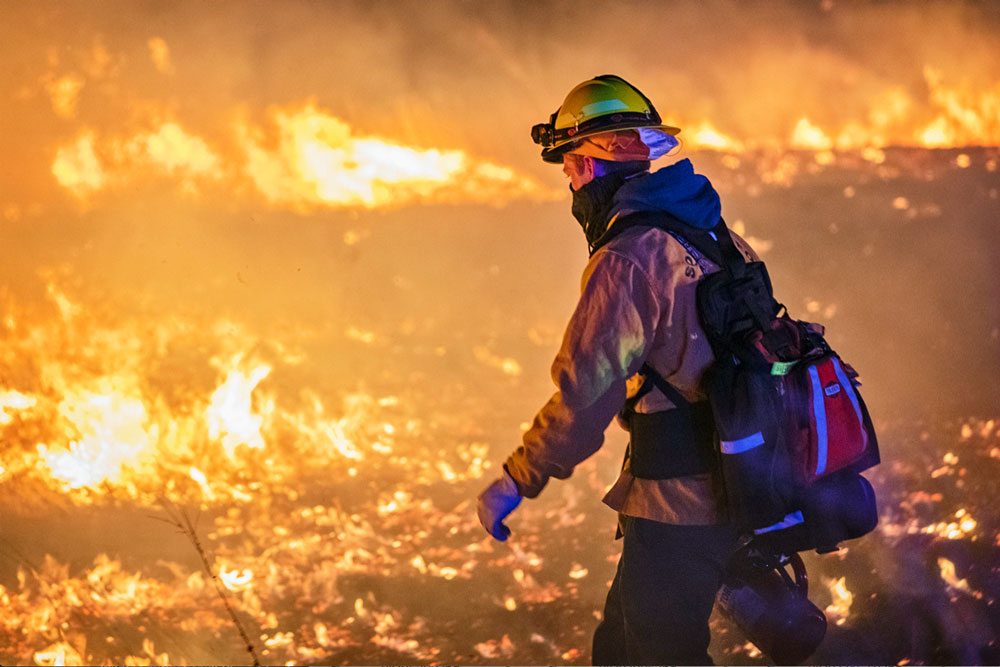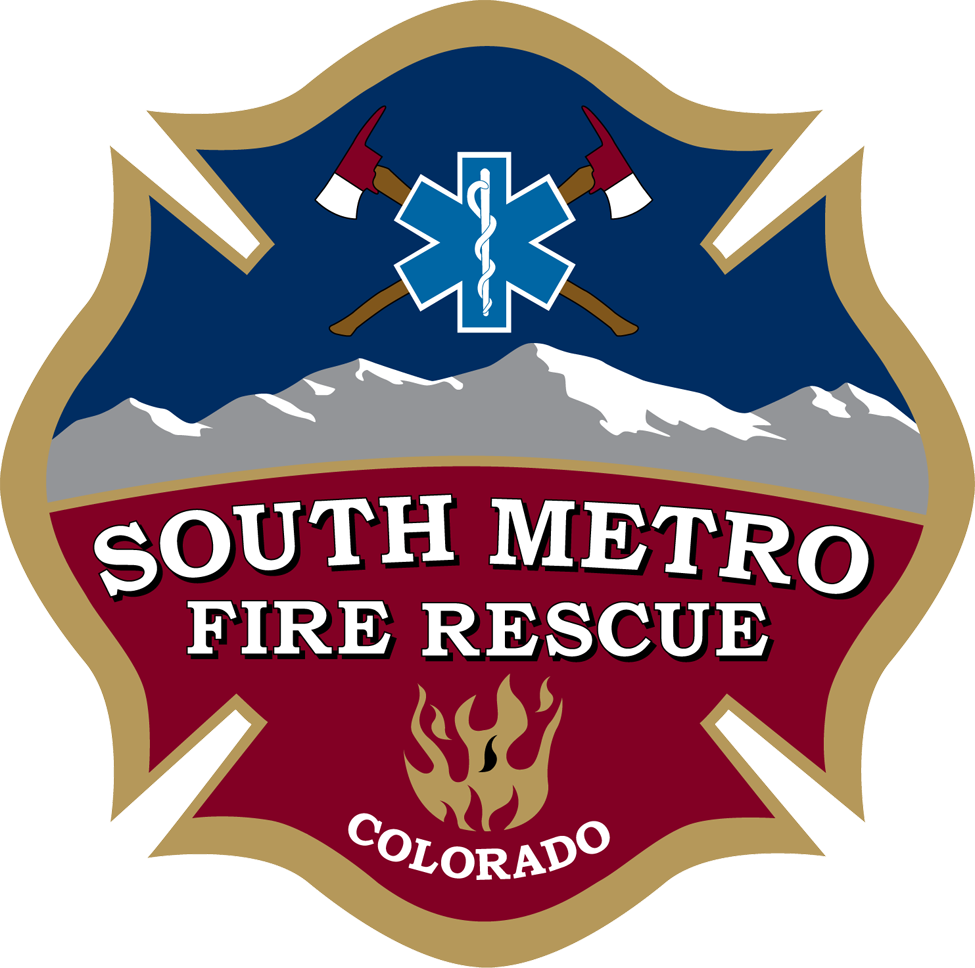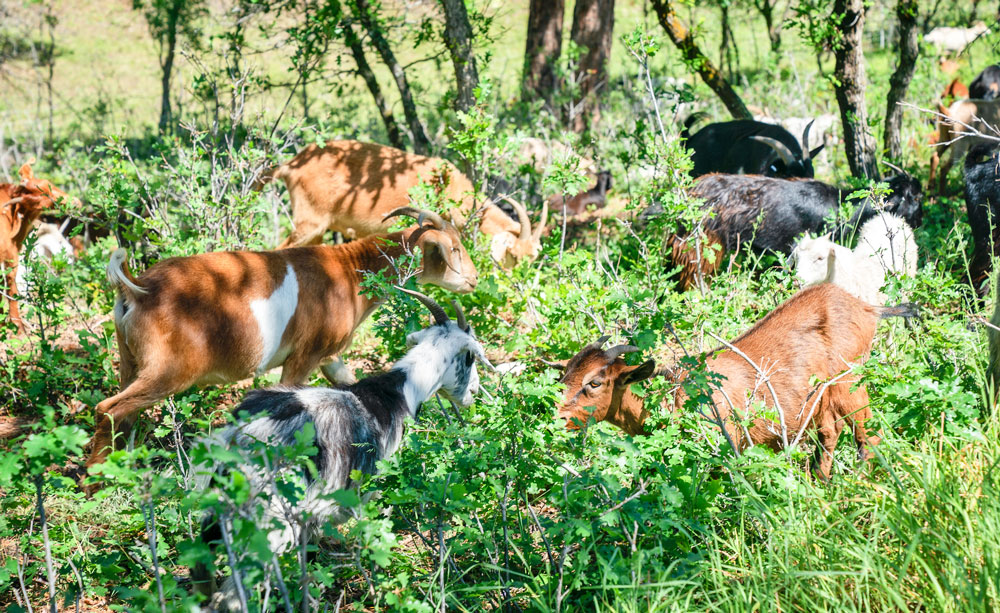Risk reduction for wildland fires
By Chris Michlewicz; photos courtesy of South Metro Fire Rescue

SMFR crews fight a wildland fire that burned more than 200 acres at Cherry Creek State Park in February.
The beautiful natural landscape is a big reason why most residents in the Castle Pines community decided to settle here. It’s also a big reason to take extra precautions to mitigate wildfire risk.
South Metro Fire Rescue (SMFR) has some of its primary wildland firefighting equipment and its top wildland experts assigned to stations in the 80108 area, and that’s because communities like Castle Pines, The Village at Castle Pines, Surrey Ridge and Happy Canyon are uniquely situated in a place where dense, dry brush and trees are incorporated into populated areas.
Furthermore, many of these communities stand adjacent to large swaths of open space, including Cherokee Ranch, the site of a fast-spreading fire in October 2003 that threatened approximately 1,200 homes and burned as many acres east of Daniels Park Road and US 85. Factor in improperly discarded cigarettes from motorists on US 85 or I-25, lightning, and passing freight trains – which have been known to throw off sparks that may cause grass and brush fires in the area – and the result is an elevated risk.
Einar Jensen, one of six risk reduction specialists for SMFR, has made it his mission to educate homeowners, HOAs, businesses, assisted-living communities and school children about wildfire awareness and ways to mitigate risk. He performs free, 20- to 30-minute wildfire risk assessments at a homeowner’s request and provides individualized recommendations to make homes less vulnerable to wildfires. Jensen says it’s a service most people don’t take advantage of, and he’s trying to get the word out about it.
Most of his suggestions involve minor adjustments to the home or surrounding landscaping, and homeowners are not bound to follow the recommendations. He’s also not going to assess fines or ask people to completely change their yard.
“One of the worst fears is that I’ll tell them to cut the ponderosa pines around their home. I’m not going to do that,” Jensen said, adding the pines are actually more fire resistant than other trees because of their thick bark and low sap content.
Sometimes reducing risk is as simple as removing debris from gutters, removing piles of dead leaves and needles beneath a deck, or moving all species of juniper trees at least 30 feet from a building. Residents with yards large and small can also hire companies that use goats to eat the low-lying vegetation that tends to catch fire.
SMFR encourages homeowners to make a family evacuation plan complete with a rallying point, appoint an emergency contact to relay information to family and friends, and have a plan B for escaping if a road is closed due to the fire. Potentially life-saving tips and planning documents, as part of a program called ‘Ready, Set, Go,’ are available on South Metro’s website at https://www.southmetro.org/.
Families should also be sure to register their cellphone number with Douglas County’s CodeRED system, which provides pre-evacuation and evacuation notifications, at dcsheriff.net (see ad page 3).
Jensen said families must always keep their guard up.
“Wildfire season is January 1 through December 31,” he said.

